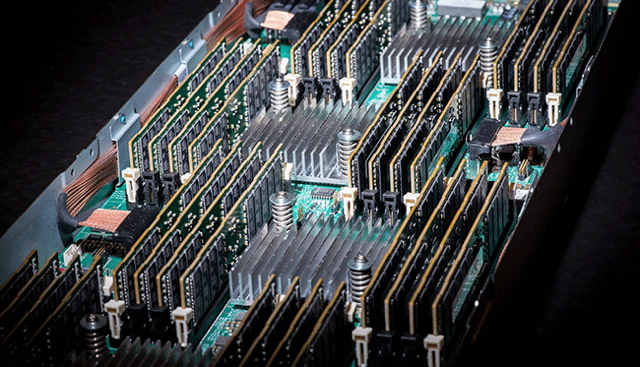Hewlett Packard Enterprise introduced a prototype computer dubbed The Machine, which has a single 160-terabyte memory bank that can simultaneously process the data found in 160 million books. This never-before-accomplished feat reveals the potential of what’s called Memory-Driven Computing. The custom-built computer is, says HPE, the world’s largest single-memory computer, based on the largest R&D program in HPE’s history. The Machine, it adds, and its capabilities will be transformational.
VentureBeat quotes HPE chief executive Meg Whitman as saying that, “The secrets to the next great scientific breakthrough, industry-changing innovation, or life-altering technology hide in plain sight behind the mountains of data we create every day.”
“To realize this promise, we can’t rely on the technologies of the past, we need a computer built for the Big Data era,” she continued.
HPE says that, “based on the current prototype, [it] expects the architecture could easily scale to an exabyte-scale single-memory system and, beyond that, to a nearly limitless pool of memory — 4,096 yottabytes.” That, says VentureBeat is “250,000 times the entire digital universe today,” meaning “it will be possible to simultaneously work with every digital health record of every person on earth, every piece of data from Facebook, every trip of Google’s autonomous vehicles, and every data set from space exploration all at the same time.”
In Memory-Driven Computing, the memory, not the processor, is “at the center of the computing architecture,” which eliminates “the inefficiencies of how memory, storage and processors interact in traditional systems today.” The result is that Memory-Driven Computing can “reduce the time needed to process complex problems from days to hours, hours to minutes, and minutes to seconds to deliver real-time intelligence.”
“We believe Memory-Driven Computing is the solution to move the technology industry forward in a way that can enable advancements across all aspects of society,” said HPE chief technology officer Mark Potter, who also directs Hewlett Packard Labs.
Moor Insights & Strategy analyst Patrick Moorhead adds that, “The Machine is architected the ways devices will be built in the future … with a massive memory footprint and a combination memory and storage,” which will “help analytical and machine learning workloads and also allows accelerators to get direct access to a massive memory-storage footprint.”


No Comments Yet
You can be the first to comment!
Sorry, comments for this entry are closed at this time.